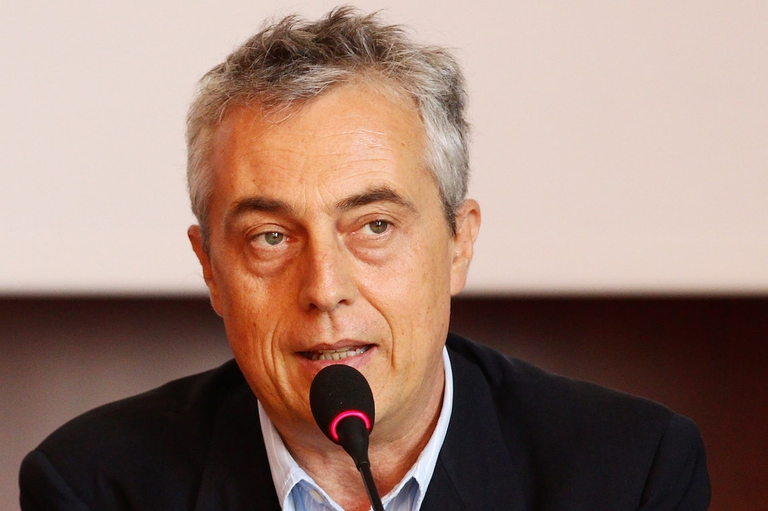
The Amazon became an alternative classroom during the pandemic. Now, the educational forest in Batraja, Bolivia, lives on to teach children and adults the value of nature.
After all the hype surrounding the world famous Expo 2015, Milan is back at the centre of the scene thanks to the Italian architect Stefano Boeri and his sustainable Gold LEED certified skyscraper, the Bosco Verticale (Vertical Forest). The construction won the 2014 International Highrise Award and is 2015’s Best Tall Building Worldwide as announced by
After all the hype surrounding the world famous Expo 2015, Milan is back at the centre of the scene thanks to the Italian architect Stefano Boeri and his sustainable Gold LEED certified skyscraper, the Bosco Verticale (Vertical Forest). The construction won the 2014 International Highrise Award and is 2015’s Best Tall Building Worldwide as announced by the Council on Tall Buildings and Urban Habitat (CTBUH) on the 13th of November, one of the most prestigious architectural prizes of the year.
Designed by Boeri Studio now Stefano Boeri Architetti (Stefano Boeri, Gianandrea Barreca, Giovanni La Varra), in collaboration with developer Manfredi Catella (Hines Italia SGR S.p.A.), Bosco Verticale responds to the contemporary demand for an intrinsic need: the desire to live in a natural ecosystem without sacrificing comfort as well as a lifestyle that merges the history of the place with a contemporary vision.
Vertical Forest is a model for a sustainable residential building, a project for metropolitan reforestation that contributes to the regeneration of the environment and urban biodiversity without urban sprawl putting more pressure on the surrounding territory. The two residential towers of 110 and 76 metres in height host 900 trees (each 3, 6 or 9 metres tall) and over 2000 plants, a wide range of shrubs and floral species, distributed along the building’s facades in relation to the sun. Coated in hanging gardens, the buildings are conceived to deliver environmental sustainability and assure residents the highest standards of comfort.
The vegetable system of the Bosco Verticale favours the development of a microclimate, produces humidity, absorbs CO2 and dust particles and produces oxygen, aiding environmental performance. The buildings will also become an ever changing landmark for Milan since their exterior will gradually renew their colour with the passing of the seasons.
Blowing off many other internationally renowned starchitect firms such as Renzo Piano, UNStudio, OMA, Roger&Partners and so forth, Bosco Verticale won the prestigious award because it “responds to the human need to be in touch with Nature”, as the jury unanimously resolved. Elected 2015’s Best Tall Building Worldwide and in Europe by the CTBUH Annual Awards, Boeri’s Bosco Verticale seems to be the construction others should learn from.
But can a green skyscraper truly fulfill the human need to feel in touch with nature, or does it just fake it? Boeri designed something that makes us rethink the relationship between architecture and nature. Architecture doesn’t have to destroy or invade nature. In fact, the inversion of urbanisation’s predatory relationship with the environemnt is working well as far as this contemporary vertical forest in the heart of Milan is concerned.
Siamo anche su WhatsApp. Segui il canale ufficiale LifeGate per restare aggiornata, aggiornato sulle ultime notizie e sulle nostre attività.
![]()
Quest'opera è distribuita con Licenza Creative Commons Attribuzione - Non commerciale - Non opere derivate 4.0 Internazionale.
The Amazon became an alternative classroom during the pandemic. Now, the educational forest in Batraja, Bolivia, lives on to teach children and adults the value of nature.
Our species took its first steps in a world covered in trees. Today, forests offer us sustenance, shelter, and clean the air that we breathe.
Bangladesh suffered widespread damage as a result of Cyclone Amphan. Yet the Sundarbans mangrove forest acted as a natural barrier protecting the country from further destruction, as it has done countless times before.
On top of a 2.4 million dollar compensation, the indigenous Ashaninka people will receive an official apology from the companies who deforested their lands in the 1980s.
The tapir was reintroduced into Brazil’s Atlantic Forest, the country’s most at-risk ecosystem. The species can play a key role in the forest’s recovery.
Forests are home to 80 per cent of the world’s terrestrial biodiversity. This year’s International Day of Forests highlights the urgent changes needed to save them.
After a legal battle that lasted two years, Indonesia’s Supreme Court has revoked the permit to mine for coal in the forests of South Kalimantan in Borneo.
The list of human and animal victims of the Australia wildfires keeps growing – one species might already have gone extinct – as the smoke even reaches South America.
Areas where the FARC guerrilla used to hold power in Colombia have faced record deforestation. Farmers cut down trees, burn land and plant grass for cows. Because, “what else can we do for a living here in the Colombian Amazon”? An intimate report from the heart of the felled forest in Caquetá.








